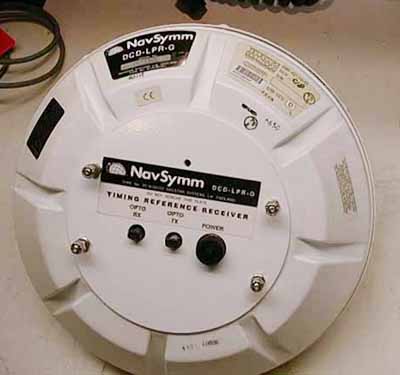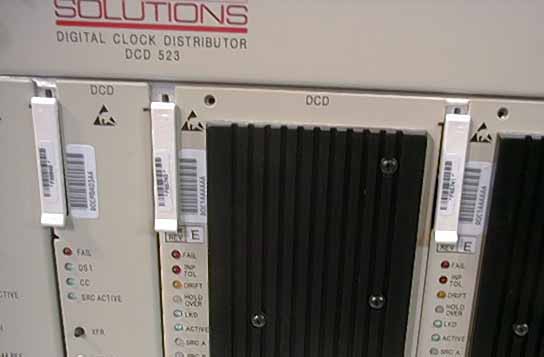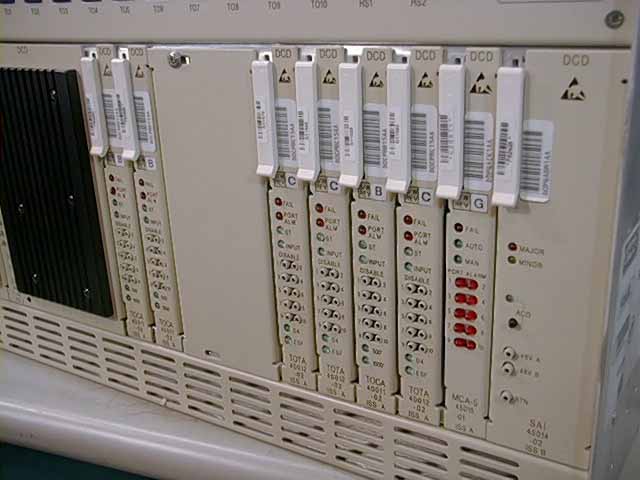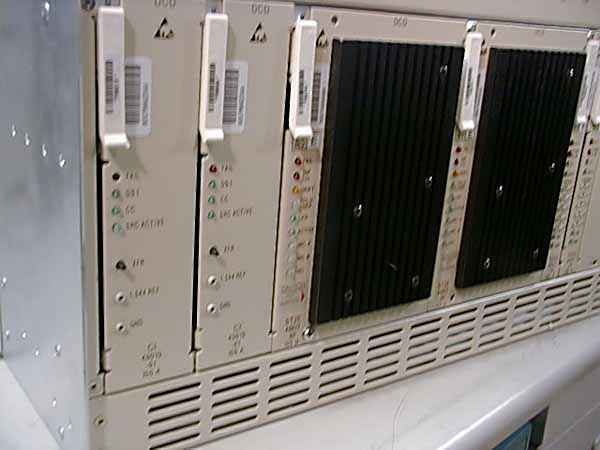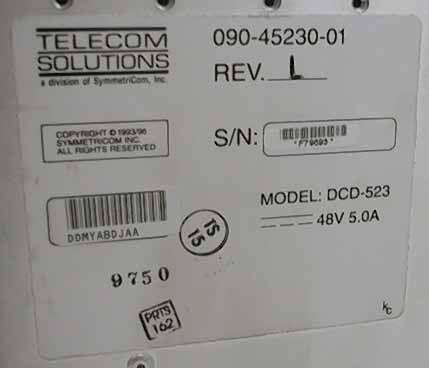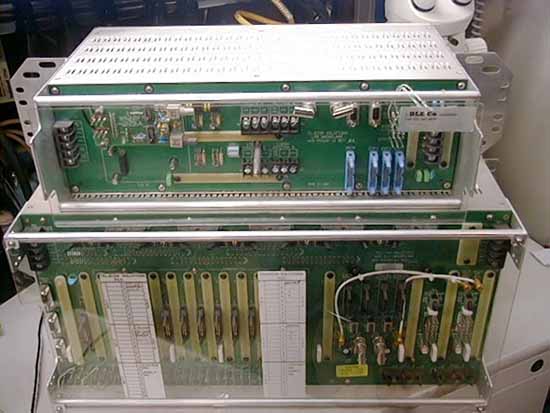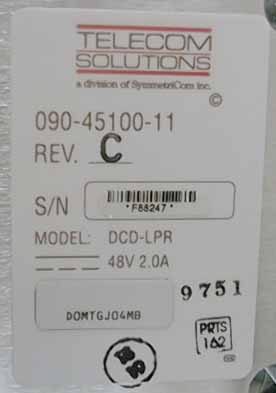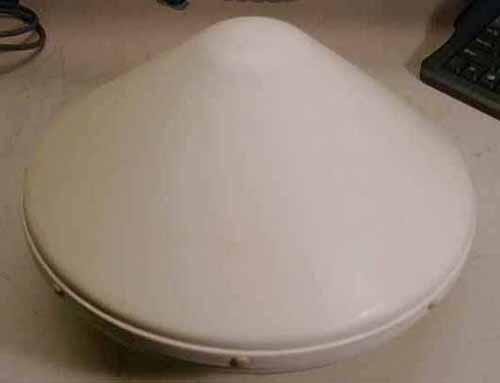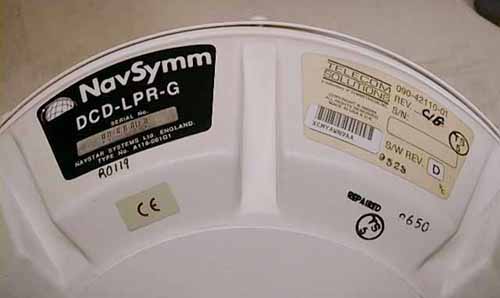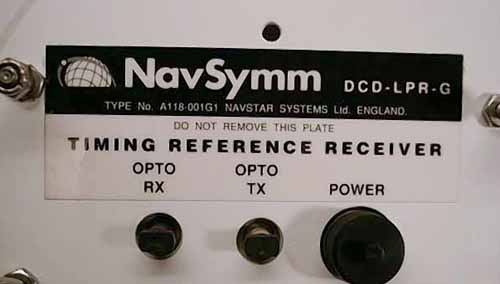|
Telecom Solutions
DCD 523 Digital Clock Words from the Seller: This is perhaps the finest network timing system available on the market today. The outstanding performance comes from applying state of the art technology and innovation design to every aspect of the system. First, the DCD-523 has dual rubidium oscillators for state of the art short term timing stability and superior holdover. Secondly, add the unprecedented long term performance of GPS tracking with the GT1 GPS Module...but GPS is only as good as its signal. Third, it is the innovative antenna design which places the receiver front end in the antenna eliminating transmission line losses. The antenna then sends the timing signal over optic fiber to the main receiver. since Optic fiber lines have minimal loss, the approach allow virtually unlimited antenna placement with no performance penalty. Combined with the systems superior build quality and other innovations and you have truly the best system on the market!
DCD 523 Digital Clock
Characteristics: The DCD-523 is a SYNC AND TIMING distribution system that provides the accurate clock references needed throughout your network to assure reliable synchronization.The DCD-523 platform addresses timing applications from Stratum 1 to Stratum 3. Its system architecture offers the enhanced reliability of a fault-tolerant network to address all existing and future timing/synchronization needs. Modular design provides optimum flexibility. For example, Primary Reference Clock (PRC) ST1 applications are provided by adding any of the TimeSourceฎ products, or the DCD-LPR (Local Primary Reference) system to the input of the DCD-523 Multi-Reference Controller (MRC). Or, for slave clock applications, the DCD-523 can be equipped with a variety of clocks, including the ST2E,TNC, and ST3E, with outputs in any timing signal format. The DCD-523 is backwards compatible with most existing DCD cards.The user can migrate to the DCD-523 and preserve existing quality. Management of the system is possible via the Version 5 cards. Inputs and outputs to and from the system can be provisioned, alarms and status can be retrieved, and performance data collected can be downloaded to analyze network performance. SSM messaging is supported by the Version 5 cards. Features: DCD-LPR Cards Included: * (1) GT1 GPS Timing Interface T1 Card: <<(This provides enhanced GPS tracking of the rebidium oscillators) Characteristics: The Symmetricom DCD-LPR/C is a front-end primary reference source used with the DCD timing platform for synchronizing digital telecommunications networks, and is fully compliant with CE mark requirements. The DCD-LPR/C can provide the Primary Reference Source (PRS) required at any key network node, independent of land-line timing distribution. Using readily available radio disseminated services, such as GPS (Global Positioning System), the DCD-LPR/C generates E1 clocking signals which exceed ITU, ANSI and Bellcore requirements for PRS accuracy and stability. This creates a more survivable network architecture, in which network maintenance and administration are reduced, while performance, reliability, and services are enhanced. The DCD-LPR/C employs an integrated, roof-mounted GPS antenna and Timing Receiver (GTR). The GTR uses an all-in-view method to ensemble up to six GPS satellite signals with a dynamic averaging technique that mitigrates the effects of Selective Availability (SA). The UTC timing from the GTR is then passed to the GPS Timing Interface (GTI) card in the DCD-LPR/C shelf. The LCD messages on the front panel of the GTI indicate the current performance of the card or any required diagnostic information. The DCD-LPR/C system also ensembles the highly stable resonator component from the dual DCD rubidium clocks. A disciplined time-scale is then generated, using the ensemble of the DCD-series clocks steered by the UTC accuracy of GPS timing, and clocks the ouput as a E1 signal format. The E1 signal becomes the PRS signal to the SSU (Synchronisation Supply Unit) or BITS (Building Integrated Timing Supply) for office clock distribution. Existing DCD sites can be cost-effectively upgraded to PRC performance with the DCD-LPR/C. This upgrade is built on the use of existing DCD plug-in sets. Used with the Multi-Reference Controller (MRC) card in a DCD-500 system, the GTI outputs are used in a sophisticated majority scheme that qualifies each input against the other for further enhanced PRC capability and primary reference management functionality. Features:
|
|
Warranty As our many customers will attest, we will do our very best to resolve any customer problems. But our official policy is:
|

